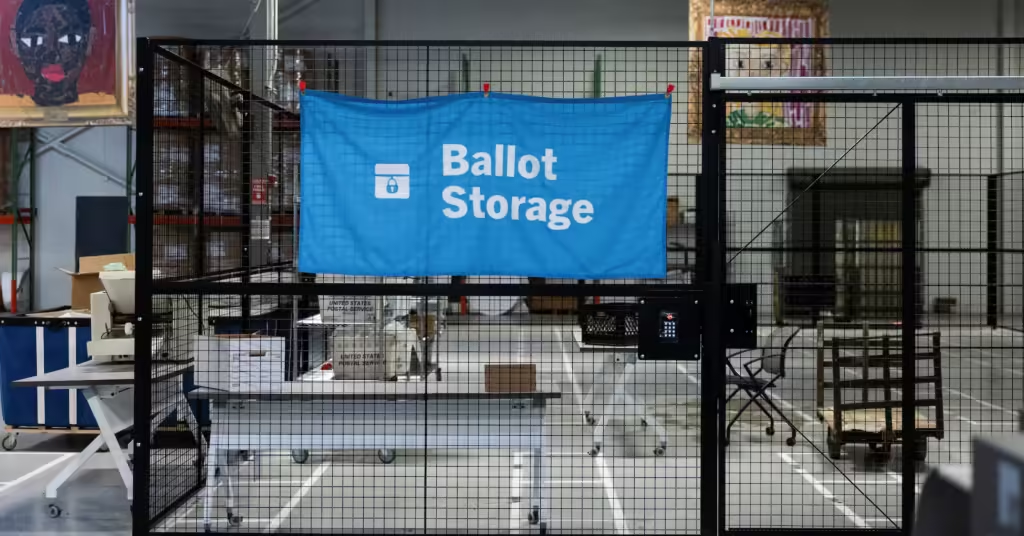
A recent federal ruling on ballots arriving after Election Day has stirred significant controversy across the U.S., impacting state preparations for the upcoming election and igniting debates over voter rights and election integrity. The federal appeals court has ruled that any ballots received post-Election Day will not be counted, sparking responses from both supporters and critics who question how this decision will affect voter participation and the broader democratic process.
The Federal Ruling on Ballots and Its Implications
The federal ruling on ballots mandates that only those ballots received by Election Day will be valid, a significant shift that could affect how states manage mail-in voting. Historically, some states have counted ballots postmarked by Election Day even if they arrived a few days later, allowing time for postal delays and increasing accessibility for absentee and mail-in voters. This ruling could change that for numerous states, imposing a stricter deadline that may affect both voters and election workers.
The decision comes at a time when mail-in voting has become increasingly popular, especially among voters who face barriers to in-person voting. However, this federal court decision underscores a desire among certain legal entities to reinforce uniformity and timeliness in ballot counting, aiming to prevent confusion and potential legal disputes that often arise in prolonged vote-counting periods.
Reasons Behind the Federal Court’s Decision
The federal ruling on ballots reflects concerns over election integrity and consistency. Proponents argue that requiring all ballots to arrive by Election Day reduces the chance of delays in finalizing election results, thus minimizing uncertainty and distrust in the electoral system. They point to instances in previous elections where prolonged vote counting led to heightened tensions and allegations of irregularities.
Additionally, the court emphasized that having a definitive cutoff aligns with the traditional structure of Election Day, where in-person votes are tabulated immediately. This approach, supporters argue, reinforces the integrity and speed of the election process, which they believe is crucial for public trust. This sentiment was echoed by several state officials who advocate for stronger measures to avoid extended vote-counting periods, arguing that this change could help streamline results and bolster confidence in outcomes.
Impact on Voters and State Election Preparations
For voters, particularly those who rely on mail-in voting, the federal ruling on ballots poses new challenges. Many Americans, including military personnel overseas, senior citizens, and individuals living in remote areas, depend on absentee ballots to participate in elections. The stricter timeline may cause these groups to face increased pressure to mail ballots earlier, heightening the importance of planning and awareness.
States, meanwhile, must now adjust their election protocols to align with this ruling. This could mean implementing additional measures to inform voters of the revised deadlines, as well as strengthening partnerships with postal services to ensure ballots are delivered efficiently. Additionally, states that historically allowed extended deadlines for late-arriving ballots must now invest in public awareness campaigns to ensure voters are informed and ballots are sent in on time. Election officials and advocacy groups are concerned that some voters may be disenfranchised by this shift, especially those in communities with limited access to postal resources.
Legal Debates Surrounding the Federal Ruling on Ballots
The federal ruling on ballots has not only practical implications but also complex legal repercussions. Opponents of the ruling argue that it places unnecessary constraints on voters and does not accommodate logistical challenges, particularly for people in rural or under-resourced areas. Critics claim that it undermines voters’ rights by introducing arbitrary restrictions that disregard modern voting needs, especially as more Americans than ever are using mail-in ballots due to convenience, accessibility, and health considerations.
Legal experts suggest that this ruling could be contested in future court cases or lead to appeals aimed at overturning it. They highlight that voting rights advocates might challenge the decision based on the grounds that it infringes on citizens’ constitutional right to vote by introducing deadlines that are difficult for some voters to meet. This ruling may spark additional lawsuits as groups fight to protect what they see as an attack on accessible voting methods, especially for those historically disadvantaged in the electoral process.
Voter Turnout and Political Repercussions
As the federal ruling on ballots adds pressure on mail-in voters to meet tighter deadlines, questions about its impact on voter turnout are mounting. Some believe that stricter deadlines may discourage participation, particularly among those who rely on the flexibility of mail-in voting. Voting rights advocates argue that any measure limiting accessibility could result in decreased voter engagement, disproportionately impacting certain demographics, such as rural communities and low-income voters.
The political implications of this decision are significant, as both major parties have varying stances on mail-in voting. The ruling may galvanize groups on either side of the debate to intensify their outreach efforts, with advocates focusing on early voting education while opponents call for reforms to reinstate extended ballot deadlines. This controversy could further influence legislative debates surrounding election reform, as lawmakers consider ways to modernize and secure election processes.
Election Integrity vs. Voter Accessibility: A National Debate
At the heart of the federal ruling on ballots is a fundamental debate between election integrity and voter accessibility. Supporters argue that requiring all ballots to be received by Election Day fosters a clear, consistent electoral process and reduces the possibility of legal battles. They maintain that this deadline is essential for maintaining the public’s trust, ensuring that every vote is counted accurately and promptly.
On the other hand, opponents argue that the decision restricts voting accessibility and fails to accommodate modern voting practices. They believe that setting strict deadlines without accounting for postal delays and other logistical factors disenfranchises eligible voters. This ruling, they argue, could further divide the country along partisan lines, as voter accessibility and election integrity remain central themes in today’s political landscape.
Looking Ahead: What This Ruling Means for Future Elections
The federal ruling on ballots is likely just the beginning of more legal developments surrounding U.S. election processes. As states adapt to the court’s decision, election officials, legal advocates, and policymakers must work together to ensure that voters are informed and have the necessary resources to meet the new requirements. The ruling may prompt increased voter education efforts, focusing on the importance of early ballot submission to avoid disqualification.
With the next election approaching, this ruling has created an urgency for voters to understand their state’s deadlines and requirements. The impact of this ruling will become clearer in the coming months as states work to implement changes and voters adjust to new deadlines. In the meantime, election reform advocates will likely continue pushing for measures that balance integrity with accessibility, ensuring every citizen’s right to participate in the democratic process is upheld.
Conclusion: Balancing Efficiency and Accessibility in U.S. Elections
The federal ruling on ballots presents a challenge to voters and election officials alike, as it introduces stricter deadlines that could impact turnout and accessibility. This decision reflects an ongoing debate in America: how to maintain an efficient and transparent election system without compromising voter access. As the country moves closer to the next election, how voters, states, and advocacy groups respond to this ruling will shape the future of mail-in voting in the United States. With both sides deeply invested in the outcome, this decision will remain a hot topic in the fight for a fair and secure electoral system.
image credit – REUTERS/Rachel Wisniewski


